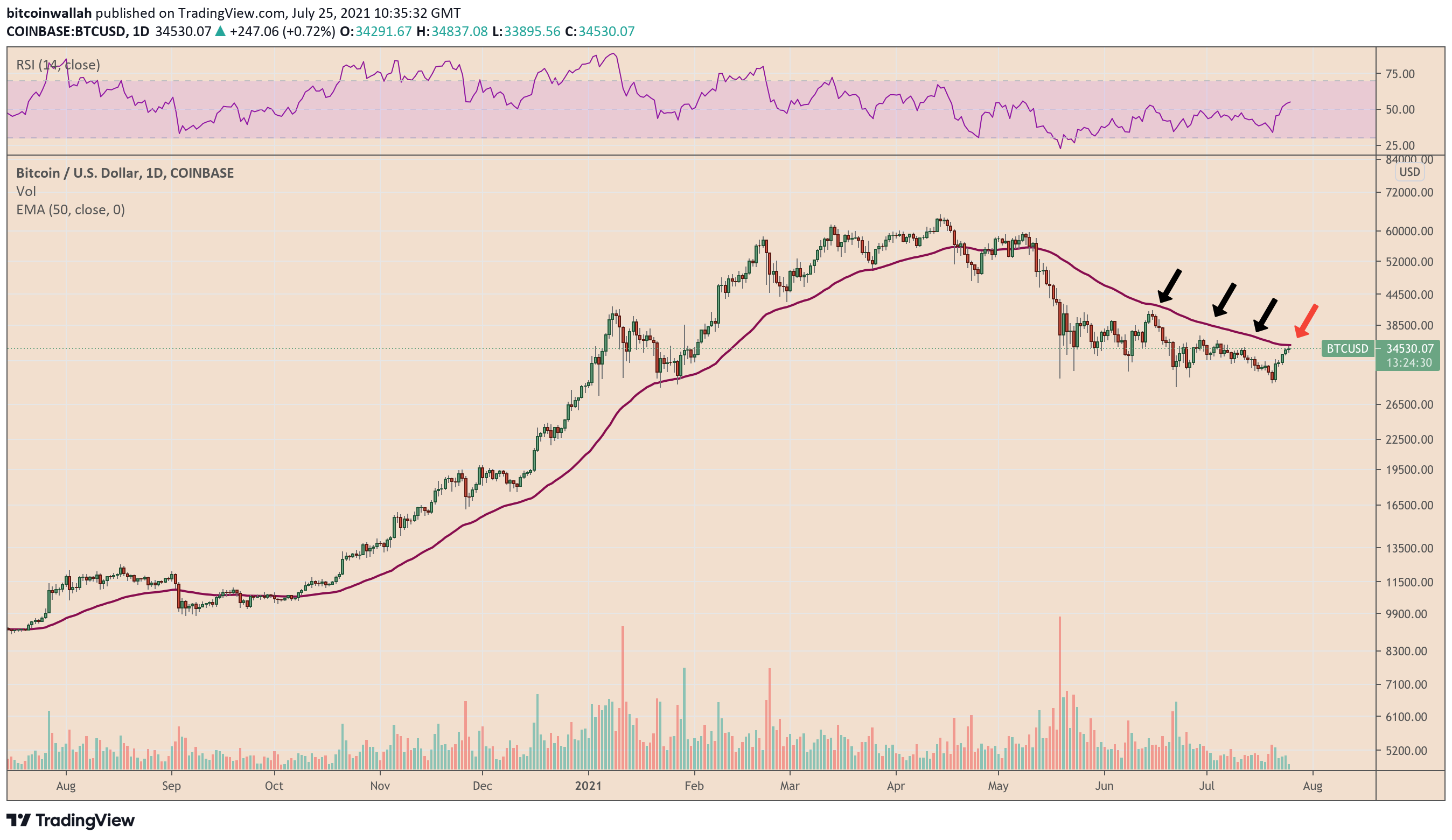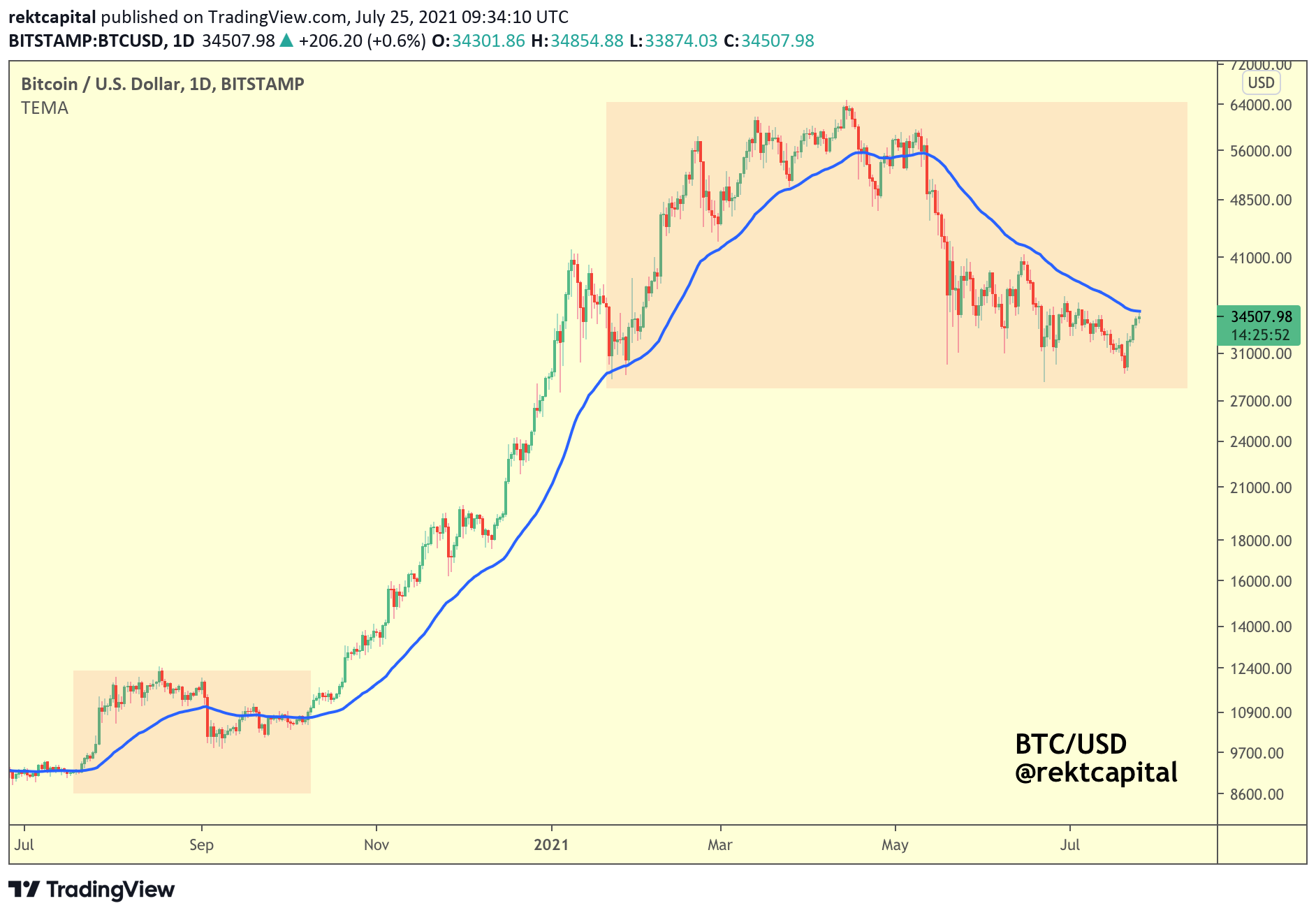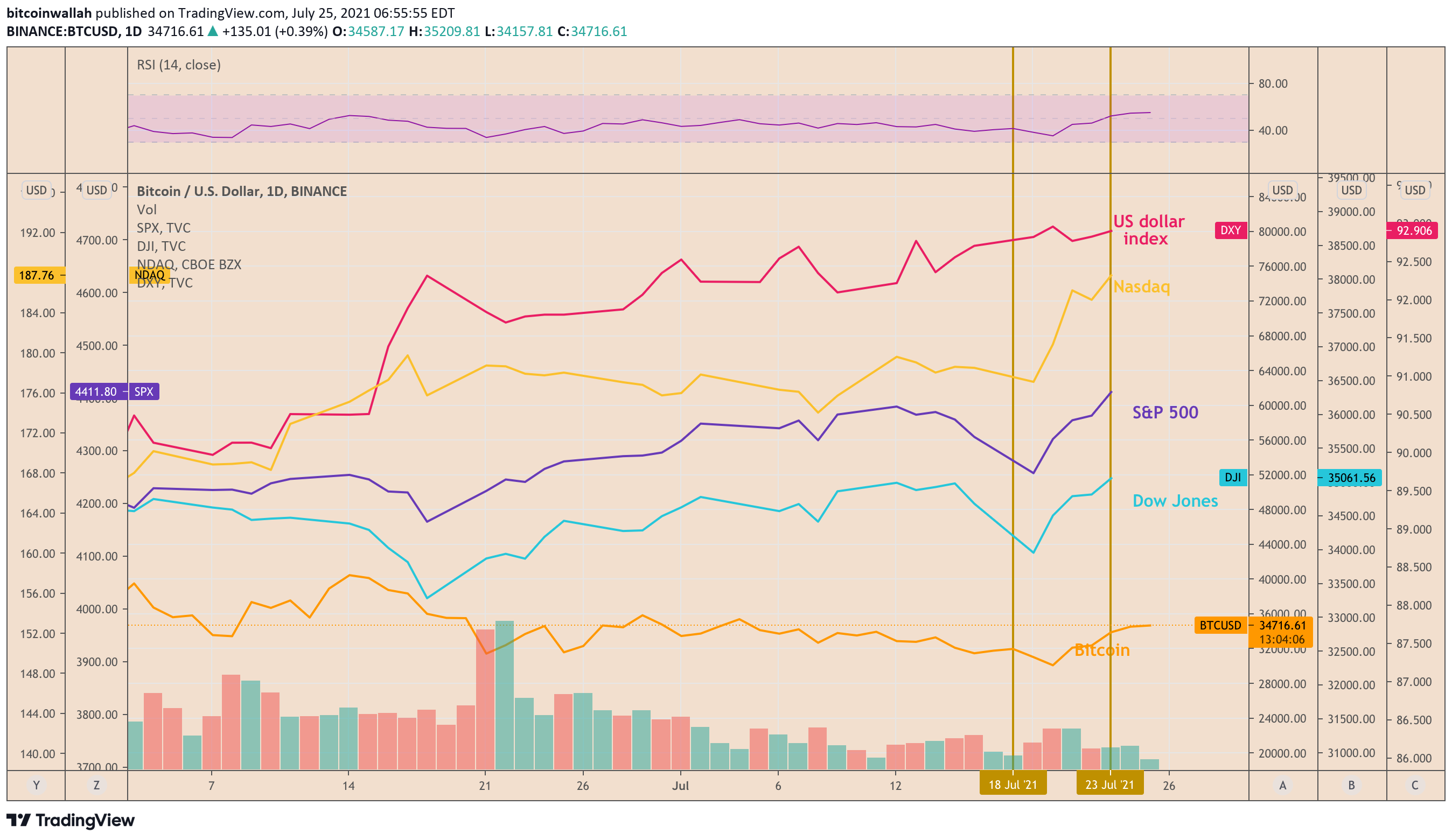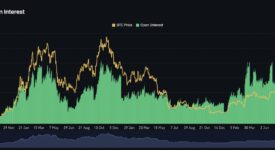A four-day winning streak brought the Bitcoin (BTC) prices closer to testing its 50-day exponential moving average (~$35,115) as resistance.
The wave, which was instrumental in strengthening Bitcoin’s bullish bias across 2020 as support, flipped to become a resistance during the May 2021 sell-off. In doing so, it capped the cryptocurrency from extending its upside rebound moves many times.
For instance, Bitcoin’s drop from $56,900 to $30,000 in mid-May prompted bulls to buy the dip. As a result, the cryptocurrency shot back above $40,000 but found its bullish momentum exhausting right near the 50-day EMA. The scenario repeated multiple times after May’s retracement attempt, as shown in the chart below.
 Bitcoin’s 50-day EMA as resistance. Source: TradingView.com
Bitcoin’s 50-day EMA as resistance. Source: TradingView.com
Rekt Capital, a well-known cryptocurrency analyst, turned to a 2020 fractal to determine potential outcomes from the ongoing Bitcoin price action.
The trader noted that Bitcoin price tested the 50-day EMA as resistance in October last year when the BTC/USD pair was trading shy of $10,000. But after breaking the wave to the upside, BTC/USD eventually established a record high near $65,000.
 Bitcoin 50-day EMA fractals. Source: Rekt Capital, TradingView.com
Bitcoin 50-day EMA fractals. Source: Rekt Capital, TradingView.com
“This [was] when BTC formed an almost identical fractal of Bitcoin’s current price action,” the profile noted, hinting that the fractal might repeat as Bitcoin tests the same resistance level after nine months.
This week
Bitcoin closed in to reclaim 50-day EMA after painting a rosy week.
The benchmark cryptocurrency was off to end the seven-day session up by more than 8%. A majority of its gains came after The B-Word conference that features a trio of Wall Street biggies— Tesla’s CEO Elon Musk, Twitter’s CEO Jack Dorsey, and Ark Invest’s founder Cathie Wood. The executives took turns to speak favorably about Bitcoin technology and shared their thoughts about the future.
Musk, whose comments on cryptocurrencies are notorious for moving markets, revealed that his private rocket company SpaceX holds Bitcoin. He also added that Tesla would resume its Bitcoin payment option once its miners switch to more renewable energy sources to operate its blockchain.
Dollar, stocks and the Fed
Bitcoin also appeared to have capitalized on risk-on flows led by a choppy U.S. dollar index and a rising Wall Street.
 Bitcoin versus leading Wall Street indexes and the Us dollar index. Source: TradingView.com
Bitcoin versus leading Wall Street indexes and the Us dollar index. Source: TradingView.com
Next week appears busy with high-profile data and policy-statement releases.
On Tuesday, the U.S. Conference Board will publish the Consumer Confidence Index for July. In addition, a preliminary Consumer Sentiment Index report from the University of Michigan shows a negative change in consumer sentiment. The report also professes fears of a sharp rise in inflation.
As of late, inflationary pressures have boosted the dollar’s appeal among investors. This has sapped Bitcoin’s interim bullish outlook despite the cryptocurrency’s popular safe-haven narrative.
On Wednesday, the Federal Open Market Committee (FOMC) will announce its decision on interest rates and publish its monetary policy statement.
Jerome Powell, the chairman of the Federal Reserve, said in congressional testimony earlier this month that they are still away from tapering their $120B a month bond-buying program. He commented that a decision on scaling back the Fed’s asset purchases would come only upon seeing a substantial improvement in the labor market.
However, the U.S. central bank officials expect to discuss whether they could start tapering by the end of this year. In detail, a hawkish shift in the Fed policy in June was partially responsible for pushing Bitcoin prices lower and the dollar higher. Therefore, Bitcoin bulls would expect to remain cautious about the potential outcome of the FOMC meeting.
Related: Bitcoin bull outlines 7 steps to more fiscal stimulus and higher BTC prices
On the other hand, if the Fed decides to sleep on the tapering talk, given the rising economic uncertainties led by the fast-spreading Delta variant of the Covid-19, it could hamper the dollar’s appeal and, in turn, provide a certain degree of upside boost to Bitcoin.
Thinking about thinking?
Instead of thinking about tapering the Fed, running $120B in monthly QE, has actually expanded its balance sheet by $162B during just the first 3 weeks in July.
Record high balance sheet = record high S&P 500.
Every month since November. Like clockwork. pic.twitter.com/UIhzWCnid5— Sven Henrich (@NorthmanTrader) July 24, 2021
On Thursday, the U.S. Bureau of Economic Analysis will release its gross domestic product’s growth estimate for the second quarter. Economists expect it to improve to 7.9% year-over-year from 6.4%.
Finally, the US economy docket will feature the Personal Consumption Expenditures (PCE), the Fed’s preferred metric to measure inflation, on Friday; it is expected to rise 3.7% in July from 3.4% in June.
The views and opinions expressed here are solely those of the author and do not necessarily reflect the views of Cointelegraph.com. Every investment and trading move involves risk, you should conduct your own research when making a decision.



